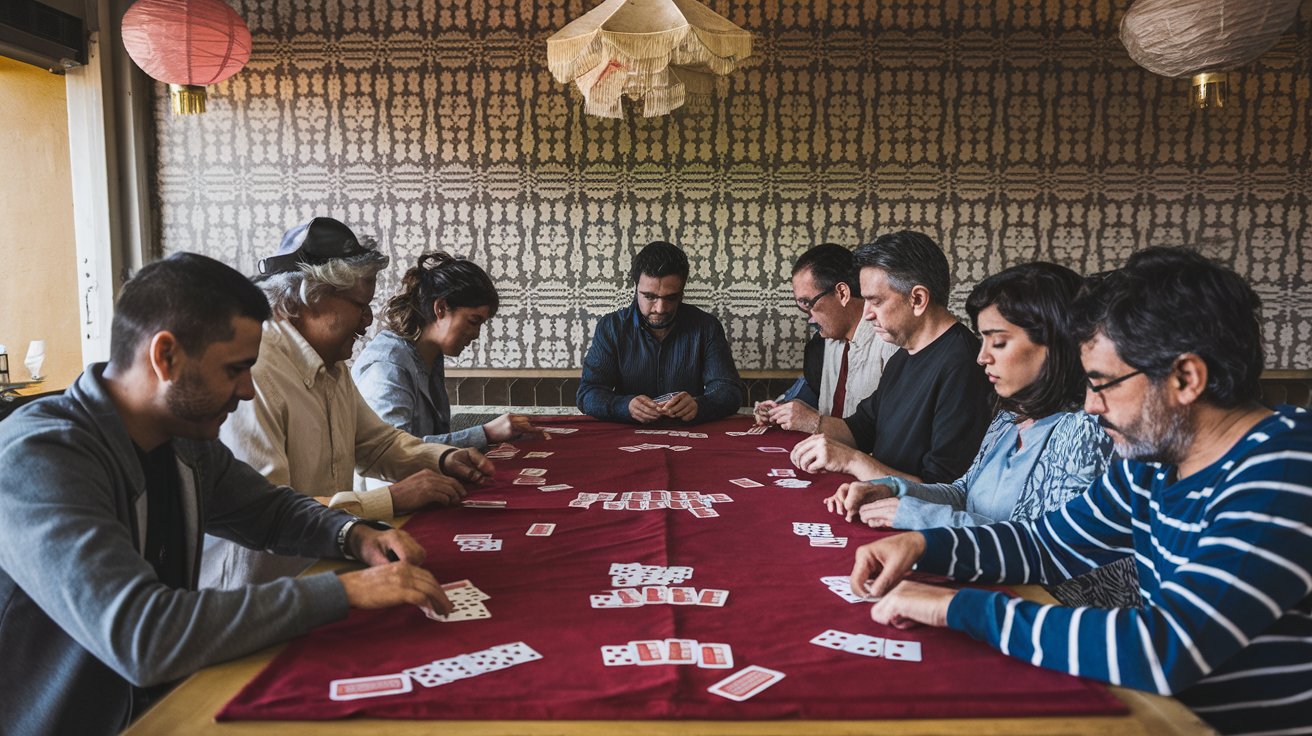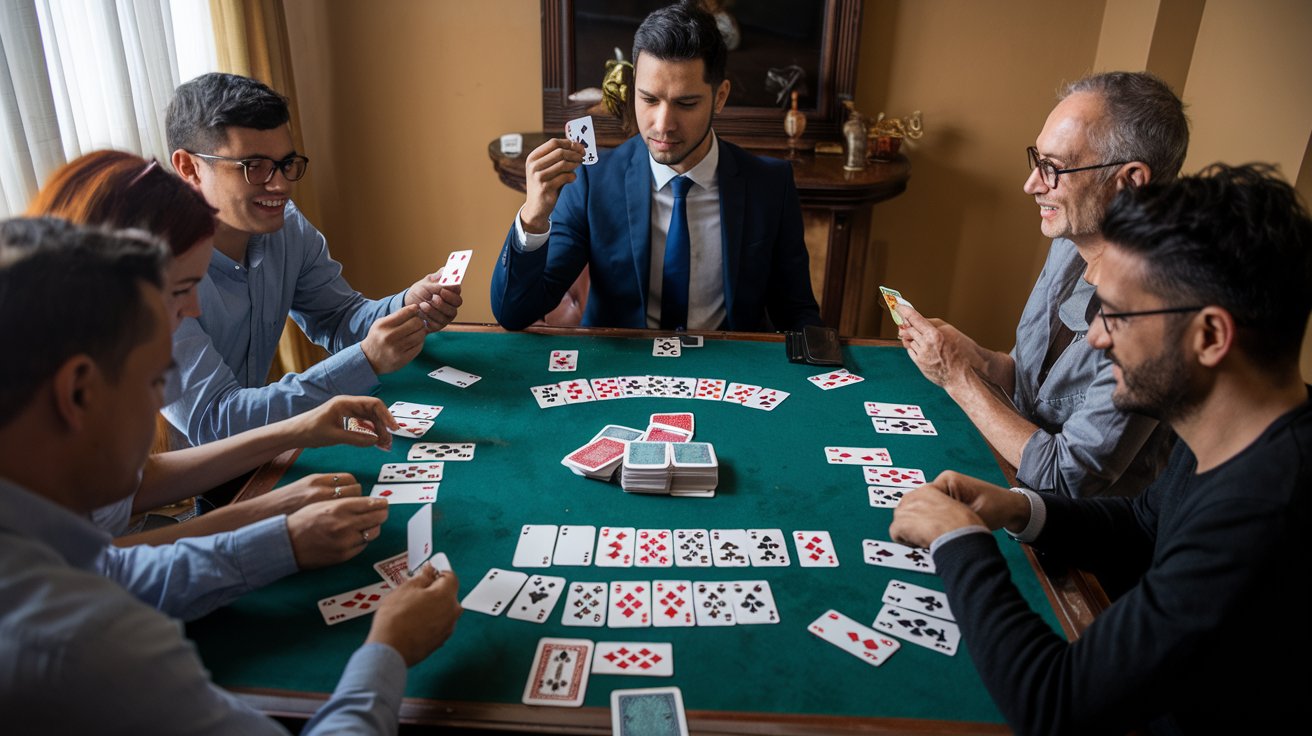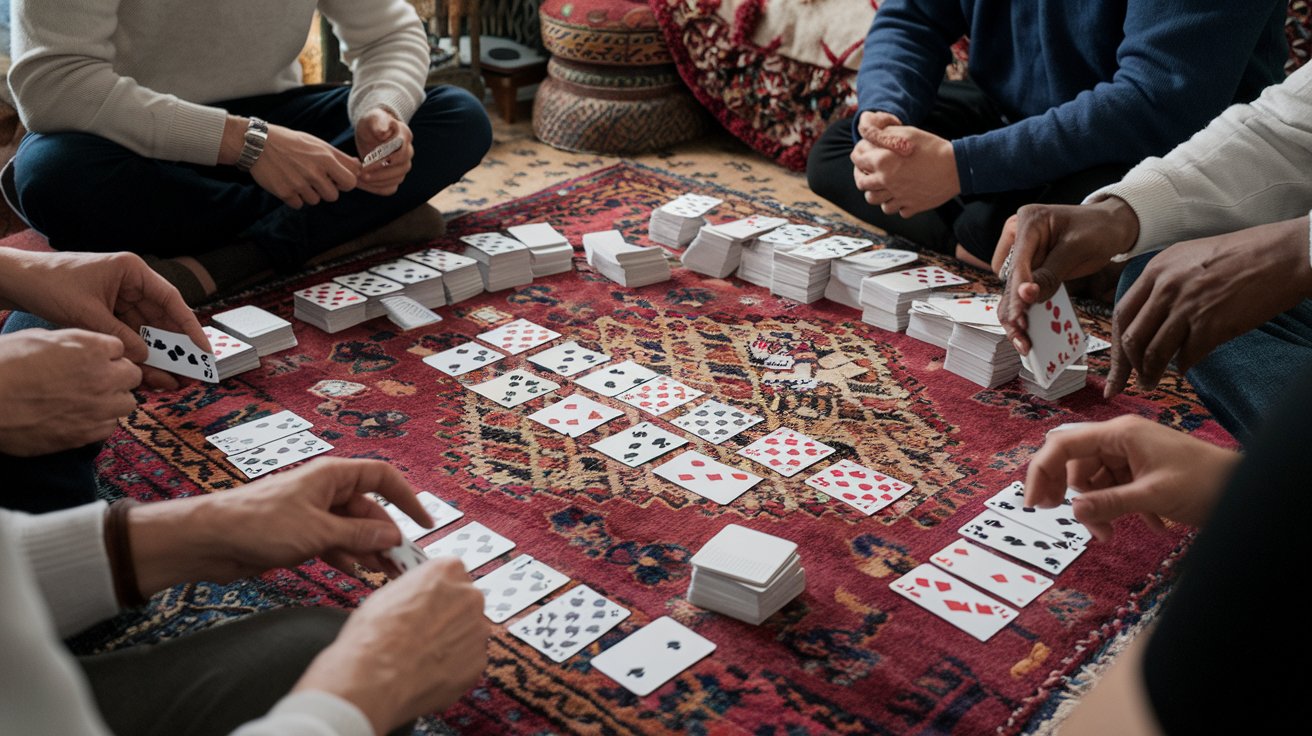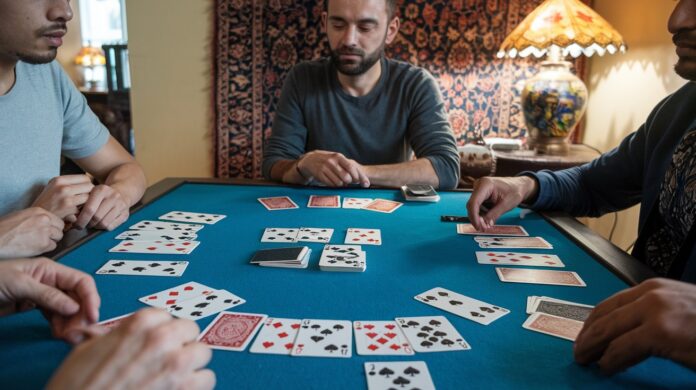Rummy is a game that has captivated millions around the world for centuries. Its variants have evolved in different regions, each adding a unique twist to the classic rules. One such variation is Persian Rummy, a version of the game that comes with its own cultural flair and strategic elements, making it distinct from other forms of rummy.
In this blog, we’ll dive into the details of Persian Rummy, exploring its history, how it differs from other rummy variants, the rules you need to know to play, and why it’s such a fun game to play with friends and family.
What Is Rummy?

Before diving into the specifics of Persian Rummy, let’s take a moment to understand the roots of the game. Rummy is a card game that is based on forming sets and runs of cards. It originated in Mexico and spread across the globe, with different cultures adding their own take on the game.
The game generally involves two or more players, and the goal is to form melds (either sets of the same rank or runs of consecutive cards in the same suit). The most popular version of rummy is Gin Rummy, but there are several other variants, including Indian Rummy, Canasta, and, of course, Persian Rummy.
A Glimpse into the Origins of Persian Rummy
As the name suggests, Persian Rummy is rooted in Persian (modern-day Iran) culture. Rummy, as a concept, spread from Europe to different parts of the world, and in Persia, the game began to take on some cultural nuances. The game’s rules and objectives closely resemble other rummy variants, but the Persian twist lies in its distinctive approach to how cards are played and how players interact with one another during the game.
It is said that Persian Rummy gained popularity in Iran in the 20th century, particularly as part of the social gatherings of wealthy families and gatherings. Over time, its popularity spread to neighboring regions and, eventually, across the world.
Persian Rummy vs. Traditional Rummy: What Makes It Different?
While Persian Rummy follows a similar structure to the more widely recognized rummy variants, there are several key differences that make it a unique and culturally enriched experience. Let’s explore these differences.
1. Number of Cards
In Persian Rummy, the number of cards dealt to each player can be more than in traditional rummy games. For instance, while many traditional rummy variants deal 10 cards to each player, Persian Rummy can start with 13 or more cards, depending on the players and house rules. This variation requires players to strategize more and think ahead.
2. The Use of Wild Cards
One of the most exciting twists in Persian Rummy is the use of wild cards. While many other rummy variants incorporate wild cards (usually jokers or specific cards like 2s), in Persian Rummy, wild cards play a bigger role in gameplay. These cards can be used to substitute any other card in a meld, making it easier for players to form sets and runs.
3. The Role of Joker
In Persian Rummy, the joker can be used in various ways to manipulate the game’s outcome. Unlike in some other variants, where a joker is just a replacement card for a single suit or number, in Persian Rummy, the joker has a greater impact and can change the entire flow of the game. This adds a layer of excitement and unpredictability, making each round fresh and thrilling.
4. Melds and Bonus Points
While traditional rummy rewards players with points for forming sets or runs, Persian Rummy offers bonus points for making certain melds. If a player uses a wild card or a joker to complete a particular combination, they earn bonus points, which adds an extra level of complexity and excitement to the game.
5. Social Interaction and Strategy
Persian Rummy is not just about the cards but about the social interaction that comes with it. The game places a significant emphasis on psychological strategy, where players can bluff, mislead, and outwit their opponents. The emphasis on player interaction sets Persian Rummy apart from other rummy versions, making it more fun and immersive.
The Basic Rules of Persian Rummy

The rules of Persian Rummy are relatively easy to grasp if you are familiar with traditional rummy, but the game adds a few twists that make it more challenging and strategic. Here’s a step-by-step guide on how to play Persian Rummy:
1. The Setup
- Players: Typically, 3-6 players can participate in a game of Persian Rummy.
- Deck: A standard 52-card deck is used, with two jokers included in the game.
- Dealing: Each player is dealt 13 cards, and the remaining cards form the stockpile.
2. Objective of the Game
The objective of Persian Rummy is to form melds (sets or runs) of cards. A set consists of three or more cards of the same rank, while a run consists of three or more consecutive cards of the same suit. For example, a run could be 4, 5, and 6 of hearts, while a set could be three 8s of any suit.
3. The Play
- Players take turns drawing a card from either the stockpile or the discard pile.
- After drawing, players can meld cards on the table, combining them into sets or runs.
- The wild card or joker can be used to complete a set or run.
- Players can also discard one card at the end of their turn.
4. Winning the Game

A player wins the game when they have successfully formed all their cards into sets or runs and goes out by discarding their final card. This player is declared the winner of the round. The remaining players count the points of the cards still in their hands, and these points are deducted from their total score.
5. Scoring
The points are calculated based on the cards remaining in players’ hands at the end of the round:
- Number cards (2-10): Face value
- Face cards (Jack, Queen, King): 10 points each
- Ace: 15 points
- Joker/Wild Card: 20 points
The winner of each round scores zero points, while the remaining players receive the points left in their hands.
Why You Should Play Persian Rummy
Persian Rummy is an excellent game for anyone who enjoys a mix of strategy, social interaction, and a bit of luck. Here are a few reasons why this cultural twist on rummy is worth playing:
1. A Cultural Experience
Playing Persian Rummy offers a glimpse into Persian culture and tradition. While enjoying the game, players learn about Persian customs and history, adding a cultural touch to their entertainment.
2. Exciting Gameplay
The inclusion of wild cards, joker bonuses, and the chance for strategic moves makes Persian Rummy exciting and dynamic. Each round offers a fresh challenge, and the ability to bluff and deceive your opponents adds a thrilling layer to the game.
3. Perfect for Social Gatherings
Like other rummy games, Persian Rummy is a perfect game for socializing. Whether you’re playing with friends, family, or strangers, the game promotes interaction, conversation, and fun, making it ideal for any gathering.
4. Great for All Ages
While Persian Rummy has a few added complexities compared to traditional rummy, it’s still easy to pick up and enjoyable for players of all ages. From children to adults, everyone can join in on the fun.
Conclusion
Persian Rummy is more than just a game — it’s a cultural experience that blends strategy, luck, and social interaction into one fun-filled package. Its unique twist on the classic rummy game provides players with exciting gameplay that keeps them coming back for more.
Whether you’re looking to learn something new, connect with friends and family, or challenge yourself with a strategic game, Persian Rummy offers a fresh and enjoyable alternative to traditional card games. Next time you’re at a gathering, try introducing Persian Rummy — you may just spark a new favorite pastime!

Zareb Saleh is a journalist at Gulf Today and a ghostwriter for Gameoholic, specializing in gaming, technology, and digital culture. With a keen eye for industry trends, he delivers insightful stories that engage and inform readers.




